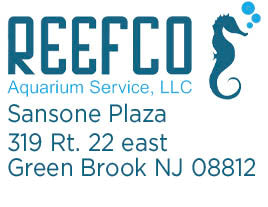Is Dead (Preserved) Or Live Phytoplankton Better For Saltwater Aquariums?
Looking for a way to boost your reef tank’s success? Phytoplankton are microscopic powerhouses that are crucial in marine ecosystems and closed systems like your reef tank.
When adding phytoplankton to saltwater aquariums we often get asked if dead or live phytoplankton dosing is better. In this article, we will discuss what phytoplankton is, which phytoplankton blend/type may be better for your system, and how you can grow your own phytoplankton at home.
What Is Phytoplankton?
Phytoplankton are unicellular, microscopic marine algae that play a key role in saltwater and freshwater ecosystems because as primary producers they form the foundation of the marine food web.

Under the microscope they boast a stunning green or golden-brown hue from the chlorophyll pigment inside their cells. The chlorophyll is critical for phytoplankton to capture sunlight and transfer it into energy via photosynthesis. In the ocean, the phytoplankton drift with the water currents, providing oxygen and nutrients for countless marine creatures.
Why Is Phytoplankton Important For Aquariums?
In a saltwater aquarium, phytoplankton provide much more than a food source. Here are some of the main reasons you should be adding phytoplankton to your aquarium supplement routine:
-
Phytoplankton improves water quality in reef aquariums
-
Phytoplankton are nutritional powerhouses for marine invertebrates, fish, corals, and filter feeding organisms
-
Phytoplankton provide oxygen for aquariums
-
Phytoplankton is a natural food source for different marine organisms
Dead Vs Live Phytoplankton
The great debate over whether live or dead phytoplankton is better for saltwater aquariums is a common conversation among both beginner reef hobbyists and expert aquarists.
When possible, feeding live phytoplankton is always better than preserved phytoplankton, often referred to as “dead phytoplankton”.
Dead/Preserved Phytoplankton
The Pros:
-
Easier to store
-
Less maintenance required
-
Longer shelf life
-
More convenient for newbie hobbyists
-
Consistent nutritional profile
The Cons:
-
Lower nutritional value
-
Often has diminished cellular integrity
-
Reduced biological activity
-
Less dynamic interaction with aquarium system
Live Phytoplankton
The Pros:
-
High nutritional value
-
Continuous phytoplankton reproduction
-
More natural
-
Active cellular processes
-
Supports complex marine interactions
-
Helps consume nitrates and phosphates
-
Boosts coral growth, polyp extension and coloration
The Cons:
-
Shorter shelf life
-
Requires maintenance
-
More challenging to cultivate
-
Can deplete quickly
-
Potential contamination
Growing Your Own Phytoplankton
If you want to take your reef keeping to the next level, consider growing your own phytoplankton culture in an aquarium refugium. The benefits of culturing phytoplankton include:
-
Having complete control over the nutritional content
-
It is a cost-effective and long term solution to phytoplankton dosing
-
It ensures that you can provide your aquarium with fresh, live phytoplankton
-
Boosts overall tank biodiversity
While preserved phytoplankton is still great, we recommend trying to culture your own. In the long run it will save you money, and you will have a fresh supply of phytoplankton basically on tap, plus it is fun to do!
TIP: If you are unsure where to start, take a look at our in-depth guide on how to grow your own phytoplankton for step-by-step instructions!
If you are new to the hobby and are not quite there yet, at Reefco Aquariums we offer three fantastic phytoplankton cultures that will provide your saltwater aquariums with the nutrition it needs.
Reefco Aquarium’s Phytoplankton Solutions
At Reefco Aquariums we have cultured three specializes microalgae supplements that will support your saltwater aquarium.
-
Tetraselmis Chui - These nutritional powerhouses are capable of producing an array of pigments that can serve multiple functions such as accelerating oxygen absorption, acting as potent antioxidants, and enhancing the natural color of fish and corals.
-
Rhodomonas Salina - This microalgae provides amazing nutrition through golden fats and phycoerythrin, but it can help reduce nasty phosphates and nitrates in saltwater aquariums. As we understand the dynamics in reef systems, we can utilize the microbiology to become even better saltwater aquarists.
-
Tisochrysis Lutea - A microscopic powerhouse that can revolutionize your saltwater aquarium. By incorporating this nutrient-rich food, you will provide your fish, corals, and other invertebrates with a balanced diet that will promote vibrant colors, growth, and overall health.
We also sell products such as veggie mats, Oyster Feast, Phyto Feast, and much more! Take a look at our full range of foods and additives for saltwater aquariums here.
Should I Select Live Or Dead Phytoplankton For my Reef Tank?
The decision between live or dead phytoplankton really depends on your aquarium’s specific needs, what tank inhabitants you have, and your maintenance capabilities. For example, if you have a coral-heavy reef tank, then your aquarium will benefit from live phytoplankton cultures. Whereas if you only have a fish-focused aquarium, dead/preserved phytoplankton would provide enough nutrients to have a stable system.
Our recommendations:
-
If you are a beginner reefer, start with preserved phytoplankton
-
For those more seasoned hobbyists, consider live cultures such as our Reefco Aquarium mixes
-
For the experts, try cultivating live aquarium in a refugium
-
If you have a mixed tank, we suggest rotating between supplementing with live and preserved phytoplankton cultures
Conclusion
Phytoplankton is a key component in the marine food web. Despite their microscopic size, phytoplankton undoubtedly will enhance your aquarium’s health and vibrancy. Whether you choose to supplement dead (preserved) or live phytoplankton cultures will boil down to how experienced you are, the type of corals and fish you have, and your aquarium’s specific needs.
If you are still unsure which phytoplankton you should add to your aquarium, need help with culturing your own phytoplankton, or would like to learn more about the nutritional phytoplankton cultures we have to offer in store - contact the Reefco Aquarium team today, we are always happy to help no matter where you are on your reefing journey!



